In the quest for a more sustainable future, the field of engineering technology has emerged as a crucial player. This dynamic discipline melds science, mathematics, and innovative thinking to design eco-friendly solutions that address the pressing environmental challenges of our time. From advancements in renewable energy and green building to the development of electric transportation and smart grids, the engineering technology landscape is rapidly evolving to shape a greener tomorrow.
Graduates of engineering technology programs are equipped with the knowledge and skills to tackle complex problems, applying fundamental engineering concepts and technical expertise to create sustainable products, processes, and systems. These technologists work across a wide range of industries, from manufacturing and automation to robotics and computer-aided design (CAD), leveraging their hands-on, real-world experience to drive innovation and make a tangible impact on the environment.
Whether you’re a student exploring engineering technology as a career path or an employer seeking to harness the power of sustainable technology, the opportunities in this dynamic field are vast and ever-evolving. By embracing the principles of sustainable design and hands-on learning, the next generation of engineering technology graduates are poised to lead the charge in creating a more environmentally-conscious and technologically-advanced world.
Key Takeaways
- Engineering technology is a field that integrates science, math, and innovation to design sustainable solutions for manufacturing, automation, and beyond.
- Graduates of engineering technology programs possess technical expertise and hands-on experience to drive innovative and eco-friendly advancements in various industries.
- Sustainable engineering technology is shaping a greener future through innovations in renewable energy, green building, electric transportation, smart grids, and more.
- Opportunities in engineering technology span a wide range of industries, offering students and professionals the chance to make a tangible impact on the environment.
- Hands-on learning and a focus on sustainable design principles are key hallmarks of engineering technology education and career paths.
Harnessing Solar Power
As the world shifts towards a more sustainable future, the widespread adoption of solar power has become a significant stride in sustainable technology. Solar panels are becoming increasingly efficient and cost-effective, allowing individuals and businesses to harness clean solar energy from the sun. This renewable energy source is not only environmentally friendly but also plays a crucial role in reducing our carbon footprint and mitigating the effects of climate change.
Solar Panel Efficiency
Researchers and engineers have been working tirelessly to improve the efficiency of solar panels, ensuring that more of the sun’s energy is converted into usable electrical energy. Advancements in photovoltaic technology, including the development of higher-efficiency solar cells and advanced manufacturing processes, have led to a significant increase in the energy conversion efficiency of solar modules. These innovations have made solar power a more viable and accessible option for both residential and commercial applications.
Transparent Solar Cells
One of the exciting innovations in solar technology is the development of transparent solar cells. These advanced materials can be integrated into windows, allowing buildings to harness solar energy while maintaining transparency and natural light. This breakthrough opens up new possibilities for energy generation in urban environments, where traditional solar panels may not be practical or aesthetically pleasing. By seamlessly integrating solar technology into the built environment, these transparent solar cells contribute to a more sustainable and energy-efficient future.
Flexible Solar Panels
Another exciting innovation in solar technology is the emergence of flexible solar panels. These innovative solar modules can be integrated into a wide range of surfaces, including building facades, roofs, and even transportation vehicles. The flexibility of these solar panels allows for greater versatility in energy generation and distribution, expanding the possibilities for solar energy utilization in various applications. The integration of flexible solar panels into the built environment and infrastructure can significantly contribute to the sustainability and energy efficiency of our communities.
These advancements in solar technology, from improved solar panel efficiency to the development of transparent and flexible solar cells, are paving the way for a future where renewable energy sources, such as solar power, play an increasingly prominent role in our energy transition and the pursuit of a more sustainable and environmentally friendly society.
Overcoming Intermittency with Energy Storage

The intermittent nature of renewable energy sources, such as solar and wind, has been a challenge in the transition to a more sustainable energy future. However, advancements in energy storage technologies are revolutionizing the way we store and utilize clean energy, overcoming this intermittency issue. Two of the most promising developments in this field are lithium-ion batteries and solid-state battery technology.
Lithium-Ion Batteries
Lithium-ion batteries have become a dominant force in the energy storage landscape, powering a wide range of applications, from portable electronics to electric vehicles. These batteries offer high energy density, power density, and long charge/discharge rates, making them an attractive solution for grid integration of renewable energy sources. Lithium-ion technology has continued to evolve, with improvements in safety, lifecycle, and cost, further enhancing their scalability and adoption in energy supply and demand response applications.
Solid-State Battery Technology
Emerging as a promising alternative to lithium-ion, solid-state battery technology is garnering significant attention in the energy storage sector. These batteries, which utilize solid electrolytes instead of the liquid electrolytes found in traditional lithium-ion cells, offer improved safety, higher energy density, and the potential for enhanced charge/discharge rates. Solid-state batteries have the potential to address some of the key limitations of lithium-ion, such as safety concerns and lifecycle constraints, making them an attractive option for grid integration and energy management in the context of renewable energy and energy transition.
The advancements in energy storage technologies, particularly lithium-ion and solid-state batteries, are playing a pivotal role in overcoming the intermittency of renewable energy sources. These innovations not only improve energy security and energy resilience but also contribute to the climate change mitigation efforts by enabling greater integration of renewable energy into the energy grid and distributed energy resources.
| Feature | Lithium-Ion Batteries | Solid-State Batteries |
|---|---|---|
| Energy Density | High | Higher |
| Power Density | High | High |
| Charge/Discharge Rate | Fast | Faster |
| Safety | Improved | Enhanced |
| Lifecycle | Long | Longer |
| Cost | Moderate | Higher |
| Scalability | High | Promising |
Green Building Technologies
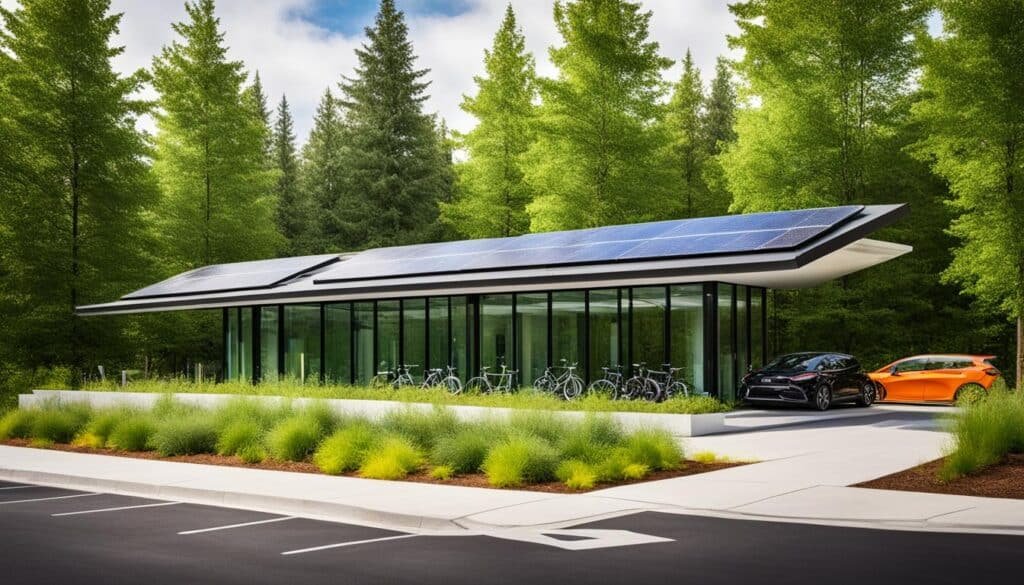
As the construction industry strives to reduce its environmental impact, the adoption of green building technologies has become a driving force in sustainable architecture. Leading the charge are innovative solutions that prioritize eco-friendly materials, energy-efficient designs, and smart building systems, all aimed at minimizing the carbon footprint and resource consumption associated with the built environment.
Eco-Friendly Materials
Architects and builders are increasingly turning to sustainable construction materials, such as recycled steel, cross-laminated timber, bamboo, and concrete made with supplementary cementitious materials. These eco-friendly alternatives not only reduce waste and resource depletion but also offer improved thermal insulation and lower embodied carbon, contributing to the overall environmental performance of buildings.
Energy-Efficient Designs
Innovative architectural designs are pushing the boundaries of energy efficiency, harnessing the principles of passive design to minimize the need for active heating, cooling, and lighting systems. Strategies like optimal building orientation, high-performance windows, and advanced insulation techniques help regulate indoor temperatures and reduce energy consumption, aligning with the goals of sustainable development.
Green Roofs
The integration of green roofs, which feature vegetation-covered surfaces, is gaining momentum in the green building movement. These living roofs not only absorb stormwater and reduce urban heat island effects but also provide thermal insulation, improve air quality, and support biodiversity, making them a valuable asset in the pursuit of sustainable urban environments.
Smart Building Systems
The convergence of building technology, the Internet of Things (IoT), and data analytics is revolutionizing the way we manage and optimize the performance of green buildings. Smart sensors, advanced controls, and intelligent building management systems enable real-time monitoring, predictive maintenance, and energy optimization, empowering occupants and facility managers to make informed decisions that enhance energy efficiency and occupant comfort.
As the construction industry continues to embrace these green building technologies, the path towards a more sustainable built environment is becoming clearer. By harnessing the power of eco-friendly materials, energy-efficient designs, green roofs, and smart building systems, the sector is leading the charge in mitigating the environmental impact of the built environment and contributing to a greener, more resilient future.
Electric Transportation Revolution
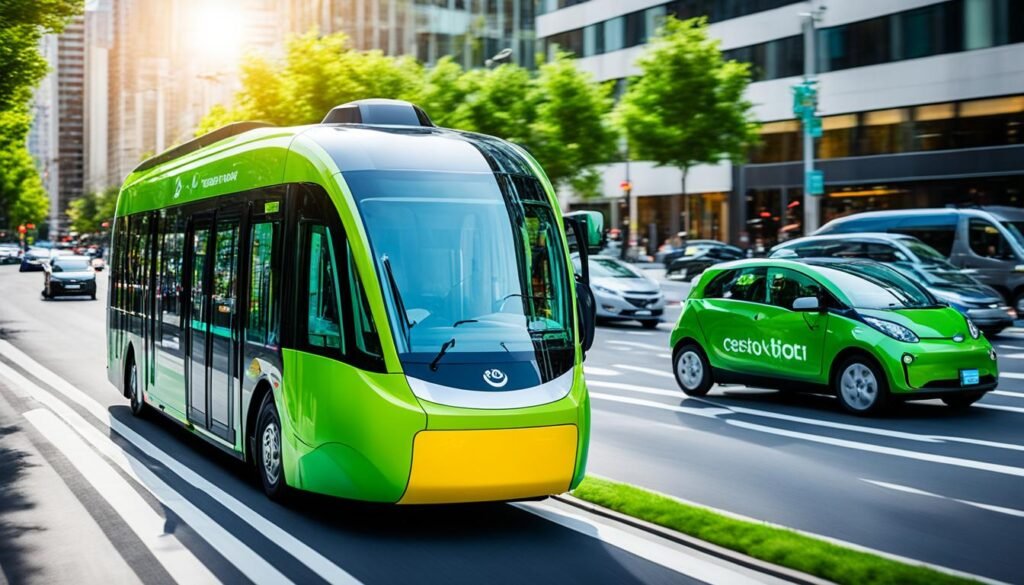
The transportation sector is a major contributor to global carbon emissions, but the world is witnessing a significant shift towards more sustainable transportation options. At the forefront of this revolution are electric vehicles (EVs), which are rapidly gaining popularity and becoming more accessible to consumers.
Electric Vehicles (EVs)
Advancements in battery technology and energy storage have made electric vehicles a viable and practical alternative to traditional gasoline-powered cars. With improved energy efficiency and longer driving ranges, EVs are now able to cater to the needs of a wider range of drivers, from urban commuters to long-distance travelers. Governments and policymakers are also playing a crucial role in promoting electric mobility through various incentives and supportive transportation policies.
EV Charging Infrastructure
The widespread adoption of electric vehicles is closely tied to the development of a robust charging infrastructure. Significant investments are being made to expand the network of public and private charging stations, making it easier for EV owners to charge their vehicles conveniently. Additionally, advancements in charging technology, including fast-charging options and grid integration, are enhancing the overall user experience and addressing concerns about range anxiety.
Electric Public Transportation
Sustainable urban mobility is not just about private electric vehicles; it also encompasses the transformation of public transportation. Cities around the world are embracing electric buses, trains, and other modes of electric public transportation. These eco-friendly alternatives not only reduce carbon emissions and noise pollution but also contribute to a more livable and sustainable cities.
The shift towards electric transportation is a crucial step in addressing the environmental impact of the transportation sector and mitigating climate change. As battery technology continues to improve, charging infrastructure expands, and public transportation becomes more electrified, the world is moving closer to a greener, more sustainable future for transportation.
Engineering Technology for a Circular Economy
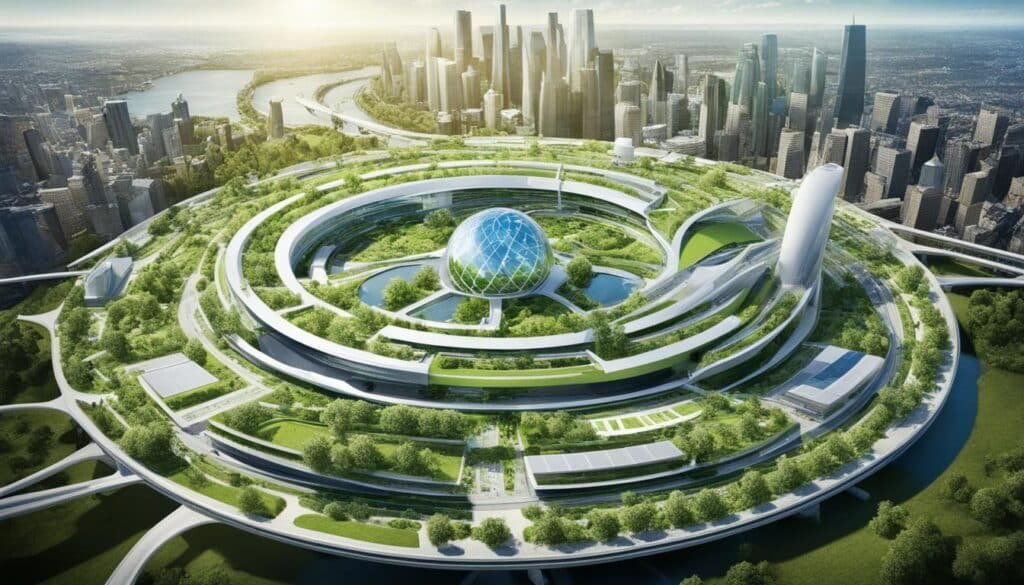
As the world grapples with the challenges of sustainability, engineering technology is playing a pivotal role in transitioning toward a circular economy. This innovative approach aims to minimize waste, conserve resources, and reduce the environmental impact of production and consumption through a range of technological advancements.
Recycling Innovations
Sustainable engineering is driving remarkable progress in recycling technologies, enabling the recovery and repurposing of a wide array of materials. From advanced polymer chemistry to automated sorting systems, these innovations are transforming the way we handle and recycle waste, promoting resource efficiency and resource conservation. Initiatives such as closed-loop systems and upcycling are helping to create new products from discarded materials, minimizing the need for virgin resources and landfill diversion.
Waste-to-Energy Processes
Another key aspect of the circular economy is the focus on waste-to-energy processes, where various forms of waste are converted into usable energy sources. This includes the development of technologies that transform municipal solid waste, agricultural residues, and even plastic waste into fuels, chemicals, and other valuable products. These waste-to-fuel and waste-to-chemicals innovations not only reduce the environmental burden but also contribute to energy recovery and zero waste initiatives.
Product Design for Recyclability
Sustainable engineering is also influencing product design, with a growing emphasis on eco-design and recyclability. Manufacturers are increasingly incorporating principles of extended producer responsibility and life cycle assessment into their product development processes, ensuring that items are designed for disassembly, repair, and recycling at the end of their useful life. This shift toward sustainable consumption and consumer behavior is driven by a combination of technological innovation, industry initiatives, and evolving policy and regulations.
AI for Environmental Monitoring
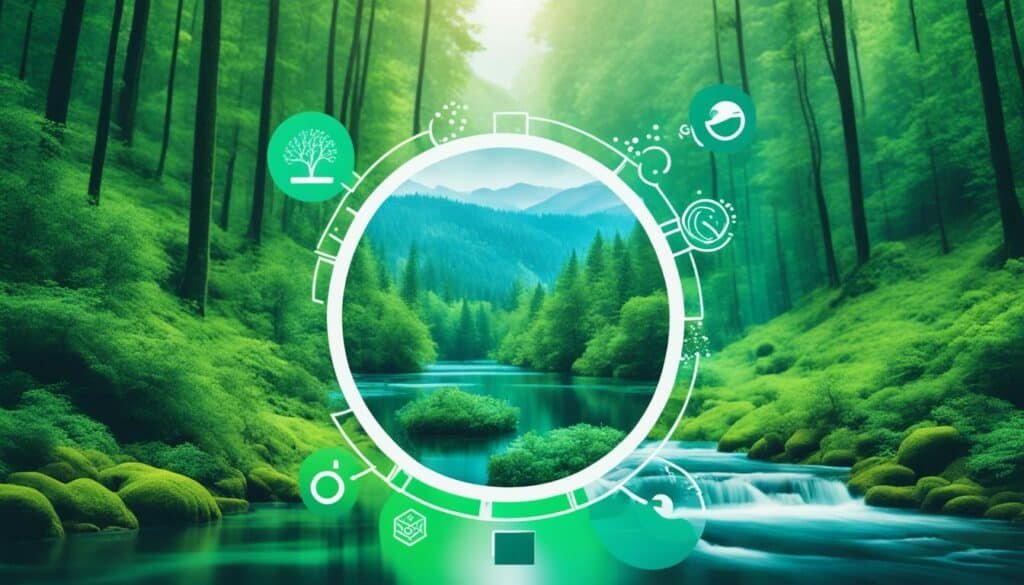
The integration of artificial intelligence (AI) and advanced analytics is revolutionizing environmental monitoring and conservation efforts. AI algorithms are being leveraged to analyze vast datasets related to climate change, deforestation, and biodiversity, enabling more accurate predictions, early detection of environmental threats, and informed decision-making for sustainable resource management.
Climate Change Analytics
Machine learning and deep learning models are being employed to process satellite imagery, sensor data, and historical records to monitor global climate patterns, identify trends, and forecast future scenarios. These powerful analytical tools help policymakers and environmental organizations develop more effective environmental policies and sustainable development goals.
Deforestation Detection
Remote sensing and satellite imagery analysis powered by AI are enabling early detection of deforestation and forest degradation. By identifying patterns and changes over time, these predictive modeling techniques can help conservation organizations and governments implement timely interventions to protect biodiversity and combat climate change.
Biodiversity Conservation
AI-driven monitoring and analytics are revolutionizing the way we understand and protect ecosystems. Data analysis of species populations, habitat changes, and environmental indicators can inform decision support systems, guiding conservation efforts and resource management strategies to preserve biodiversity and promote sustainability.
The integration of artificial intelligence and advanced analytics in environmental monitoring is a critical component of the transition towards a more green technology and clean tech future, empowering environmental entrepreneurship and environmental protection efforts worldwide.
Smart Grids: The Future of Energy Distribution
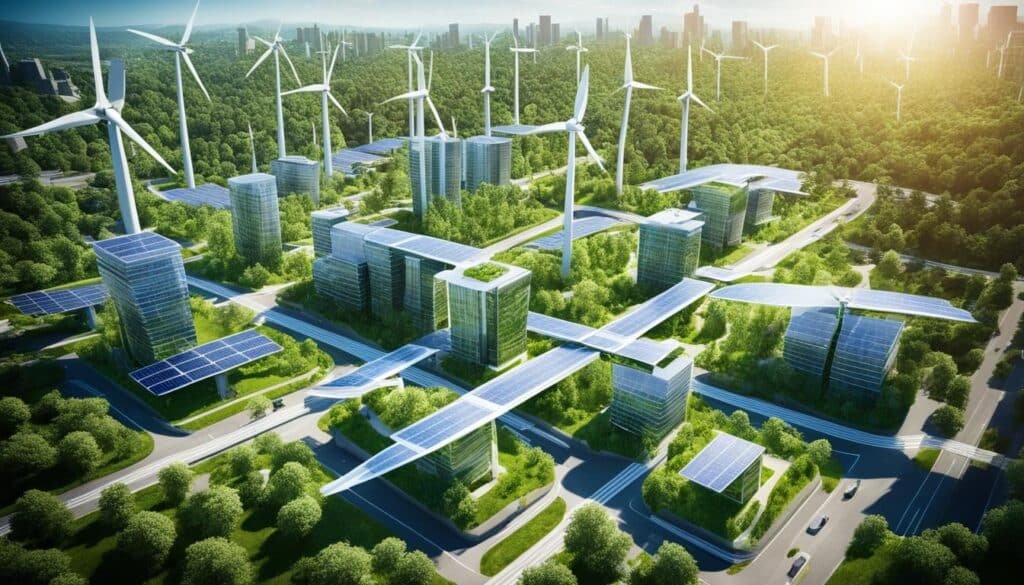
The energy landscape is undergoing a transformative shift as the traditional power grid evolves into a more intelligent and sustainable system – the smart grid. Smart grids leverage advanced sensors, communication technologies, and data analytics to optimize the distribution of electricity, enhancing energy efficiency and grid resilience.
Advanced Sensors and Communication
At the heart of smart grids are advanced sensors that monitor the flow of electricity, providing real-time data on energy usage, grid performance, and potential issues. These sensors, combined with sophisticated communication technologies, enable seamless data exchange between power generators, distributors, and consumers, allowing for more effective energy management and optimization.
Data Analytics for Optimization
The vast amounts of data collected by smart grid sensors are leveraged through data analytics and artificial intelligence to identify patterns, predict trends, and optimize the distribution of electricity. By analyzing this data, grid operators can make informed decisions to balance supply and demand, regulate frequency, and ensure grid resilience in the face of disruptions or fluctuations in renewable energy generation.
Integration of Renewable Sources
Smart grids play a pivotal role in the integration of distributed energy resources, such as solar, wind, and energy storage systems. By enabling real-time monitoring and control, smart grids can seamlessly incorporate these renewable energy sources into the energy infrastructure, fostering a more sustainable energy transition and reducing carbon emissions.
As the energy sector continues to evolve, smart grids represent a promising solution for enhancing energy efficiency, grid integration of renewable sources, and energy security – all crucial components in the pursuit of a more sustainable energy future.
Engineering Technology in Sustainable Agriculture
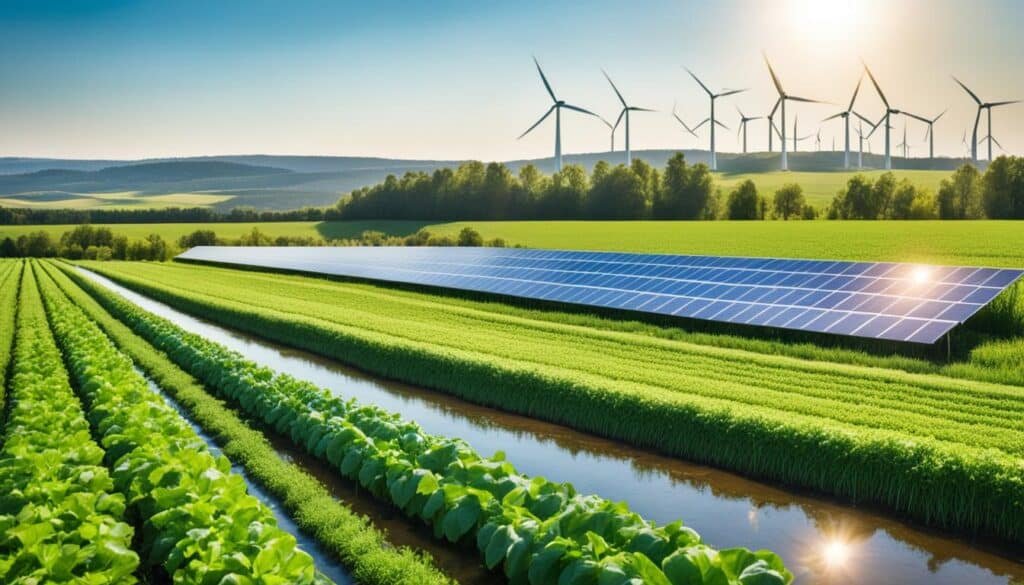
As the global population continues to grow and urbanization intensifies, the agricultural sector faces the challenge of producing more food while minimizing its environmental impact. Sustainable agriculture, enabled by advancements in engineering technology, offers a promising solution to this dilemma.
Precision Farming
Precision farming, powered by a suite of sensors, drones, and data analytics, is revolutionizing the way crops are cultivated. By precisely monitoring soil conditions, weather patterns, and plant health, farmers can optimize resource allocation, reduce waste, and boost yields. These smart farming techniques leverage precision irrigation, yield optimization, and greenhouse gas emissions reduction, contributing to a more sustainable and resource-efficient agricultural ecosystem.
Vertical Farming
In response to the constraints of traditional farming methods and the need for urban farming, the concept of vertical farming has gained traction. Vertical farming systems, often housed in controlled environment agriculture (CEA) facilities, utilize hydroponics, LED lighting, and advanced climate control to cultivate crops in multi-tiered, space-efficient structures. This approach minimizes the need for arable land, water, and pesticides, making it a viable solution for food production in densely populated areas.
Hydroponics
Hydroponics, a soil-less method of growing plants, has emerged as a sustainable alternative to conventional farming. By cultivating crops in nutrient-rich water solutions, hydroponics systems drastically reduce water usage and eliminate the need for pesticides, resulting in a more resource-efficient and environmentally-friendly approach to food production. Additionally, the controlled environment of hydroponic systems allows for year-round cultivation, enhancing food security and urban farming initiatives.
| Technology | Key Benefits | Environmental Impact |
|---|---|---|
| Precision Farming |
|
|
| Vertical Farming |
|
|
| Hydroponics |
|
|
The integration of engineering technology into the agricultural sector is paving the way for a more sustainable and resource-efficient food production system. From precision farming to vertical farming and hydroponics, these innovations are addressing the challenges of population growth, urbanization, and environmental impact, ultimately contributing to the pursuit of sustainable development.
Minimizing E-Waste with Eco-Design

As the electronics industry grapples with the growing challenge of electronic waste (e-waste), sustainable technology is offering innovative solutions to address this pressing environmental concern. The sector is embracing eco-design principles that aim to minimize the impact of consumer electronics throughout their lifecycle, from production to disposal.
Modular Electronics
One key innovation is the rise of modular electronics, where devices are designed with interchangeable components. This allows consumers to easily upgrade or replace individual parts, extending the lifespan of their devices and reducing the need for frequent replacements. Modular smartphones, for instance, enable users to swap out batteries, cameras, or screens, minimizing the amount of e-waste generated.
Repairable Devices
Closely linked to modular design, the push for more repairable electronic devices is gaining momentum. By making gadgets easier to repair, manufacturers are empowering consumers to fix their products rather than discarding them. This not only curbs the flow of e-waste to landfills but also aligns with the principles of a circular economy, where resources are kept in use for as long as possible.
E-Waste Recycling Initiatives
In parallel with eco-design, the electronics industry is spearheading initiatives to responsibly manage e-waste. These efforts include establishing robust recycling infrastructure, expanding product takeback programs, and leveraging advanced material recovery techniques. Through urban mining and green chemistry, valuable materials from discarded electronics are being reclaimed and reintegrated into the manufacturing process, further minimizing the environmental impact.
By embracing eco-design, modular architecture, and responsible e-waste management, the electronics sector is paving the way for a more sustainable future, where consumer electronics are designed to minimize their environmental footprint and contribute to a circular economy.
Bio-Inspired Design for Sustainability
As the world grapples with pressing environmental challenges, engineers and designers are turning to nature for inspiration. Bio-inspired design, also known as biomimicry, is the practice of emulating natural processes and systems to develop sustainable solutions. By observing and studying the remarkable efficiency and resilience of the natural world, researchers are uncovering innovative ways to address human needs while minimizing our environmental impact.
Biomimicry Principles
The principles of biomimicry are grounded in the understanding that nature has evolved over billions of years to create efficient, adaptable, and resilient systems. From the intricate structures of a spider’s web to the self-cleaning properties of lotus leaves, nature has developed ingenious solutions to a wide range of problems. Biomimicry encourages engineers and designers to look to these natural systems and processes as a guide for developing sustainable technologies and products.
Nature-Inspired Materials
One of the hallmarks of bio-inspired design is the development of materials that mimic the properties and functions of natural counterparts. For example, researchers have created materials inspired by the strength and flexibility of spider silk, the adhesive properties of gecko feet, and the self-healing abilities of certain plants. These nature-inspired materials have applications in fields ranging from renewable energy and transportation to water management and construction, contributing to a more sustainable future.
Biomimetic Architecture
The principles of biomimicry are also being applied to the field of architecture, where designers are creating buildings that emulate the form and function of natural structures. From the cooling systems of termite mounds to the water-harvesting abilities of the Namib Desert beetle, architects are drawing inspiration from the natural world to design energy-efficient, climate-responsive buildings that minimize their environmental impact. This biomimetic approach to architecture not only enhances sustainability but also offers unique aesthetic and functional qualities that harmonize with the surrounding ecosystem.
Also Read: Innovations In Construction Technology: Transforming The Building Industry
Conclusion
FAQs
Q: What is Sustainable Engineering Technology?
A: Sustainable Engineering Technology focuses on developing innovations and technology solutions that are environmentally friendly and promote a greener future.
Q: What are the career opportunities for graduates with a degree in Sustainable Engineering Technology?
A: Graduates with a degree in Sustainable Engineering Technology can pursue careers in various industries such as renewable energy, environmental consulting, sustainable design, and more.
Q: What is the difference between engineering and engineering technology?
A: Engineering focuses on the theoretical and conceptual aspects of designing and building systems, while engineering technology emphasizes the practical application of engineering principles.
Q: How can engineering technology graduates prepare for their career path?
A: Engineering technology graduates can prepare for their career path by gaining hands-on experience through internships, staying updated on industry trends, and joining relevant student organizations.
Q: Can you specialize in a specific field within Sustainable Engineering Technology?
A: Yes, students pursuing Sustainable Engineering Technology can specialize in areas such as renewable energy systems, sustainable construction, environmental engineering, and more.
Q: What are the benefits of pursuing a degree in Sustainable Engineering Technology?
A: Pursuing a degree in Sustainable Engineering Technology allows students to acquire knowledge and skills to develop sustainable solutions, contribute to a greener future, and have a positive impact on the environment.
Q: How can I network with professionals in the Sustainable Engineering Technology industry?
A: You can network with professionals in the Sustainable Engineering Technology industry by attending industry events, joining professional associations, and connecting with alumni in the field.




